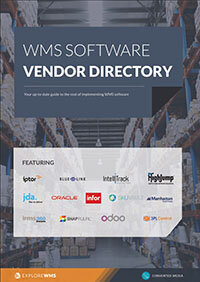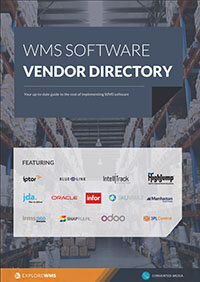How 21st century supply chains are evolving, and why you need to adapt
A 2017 supply chain is a living organism. It is constantly changing and moving in an interconnected way that responds to an ever-wider set of external and internal influences. It can get sick and fail completely when core elements fail, while periphery damage can be dealt with and minimized when treatment is delivered quickly.
We reached this point thanks to the IT revolution that’s been marching faster and faster since the late 90s. The pace keeps hastening and innovations that once came every 5 years are now becoming quarterly updates.
Trying to understand today’s supply chain advancements must inevitably focus on the improvement of technology and the need for your CIO to always be at the supply chain table.
Software, software, software
At the core of the changes your supply chain is experiences and the advantages that leaders are adopting is software. The role of IT is changing every aspect of supply chains and their management.
The first instance is the amount of companies playing catch-up by adopting WMS and ERP solutions. Using a new software platform is finally replacing most logbooks and charts sitting on company desks, allowing operations to run more smoothly and efficiently.
Upgrade your supply chain software using this free warehouse technology comparison tool
Part of this rise is due to increased bandwidth and computing power throughout the enterprise. From mobile devices and satellite locations to the back office, connectivity is everywhere. This allows software platforms to speak to every customer, every asset, and every operation in your supply chain.
Why you need to adapt
Legacy planning and operational platforms aren’t cutting it anymore because they are slow to adapt. They won’t be able to support complex supply chains that have more variables and shift faster than ever before. Growing your business today means incorporating more stakeholders and responding quickly.
Old systems generate one plan for you to follow. When things shift, you need to build an entirely new plan. That causes delays every time.
Adapting now means adopting the next generation of tools that combine all your supply chain operations and demand forecasting to adjust in as close to real-time as possible. For now, that fast response is a competitive advantage. Soon, it’ll be a business requirement and legacy platforms will do nothing but cost you business.
Updating is feasible
Here’s a bit of good news: you don’t necessarily need to rip out all your systems, especially with larger enterprise platforms like ERP. Your platform most likely already has the baseline that you need.
The core function of your ERP is still the same: take an order; make it; ship it; bill it; track the whole thing.
Now, what you’ll need to do with legacy systems is make sure they share their data. You can focus your updates on adjusting your ERP to work with standard file formats into a warehouse that your partners can see. Transparency is a major requirement of the 21st century supply chain, and sometimes that means just tweaking your data.
Issues with ERP and WMS tend to be found in add-ons like resource planning tools. Kick the add-ons off and look for integration options to make data more usable and shareable.
It’s all about opportunity
The double-edged sword in this new supply chain is that you are most likely missing sales and operational efficiency opportunities.
Customers want everything right now and they expect you to deliver it to them — and they don’t always ask before having that demand. So, your efforts will need to focus on innovative technology and infrastructure that supports new tools focused on forecasting and predictive analysis.
The good news is that there are many different solutions that can empower your supply chain with more prediction, leaner operations, and better forecasting. The bad news is that these are becoming standard so they’re available to your competition too.
The big opportunity here is that the supply chain is an amazing, living thing and you’ve got a chance to capitalize on it. Want to make sure you see these opportunities? Shift your thoughts from being ready for today to asking if you’re ready for tomorrow.
Free white paper

WMS vendor directory
Save hours of WMS vendor research with this free guide

Featured white papers
Related articles
-

Warehouse picking and packing processes: how much labor do you need?
Logiwa's Erhan Musaoglu shows you how to calculate picking and packing labor requirements for you...
-

Mission-critical features of food lot traceability software
What features of food traceability software will help you during a food recall
-

4 supply chain management requirements to factor into your WMS selection
Choose a WMS with these features to meet your supply chain management needs


